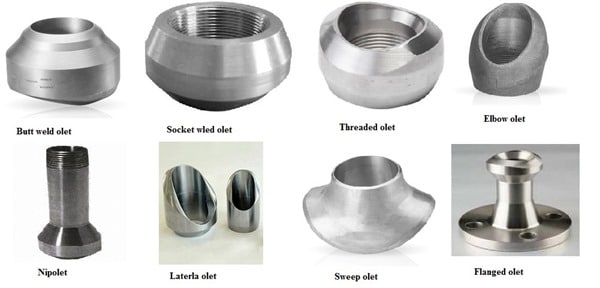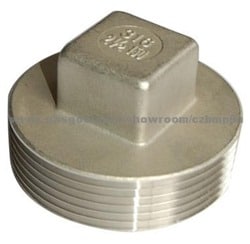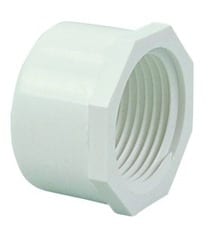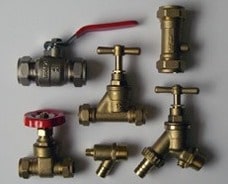The process of selecting or evaluating correct set pressure for pressure
relief valve application is relatively straightforward – the set pressure of the pressure relief valve is compared to the pressure vessel maximum allowable working pressure (MAWP). The correct set pressure can be determined by using ASME Code rules and the general principle that at least one valve must be set at or below the MAWP.
The Code does not thoroughly explain temperature considerations, and application concerns related to temperature are just as important as proper selection of the correct set pressure. The purpose of this article is to examine some of these concerns when applying pressure relief valves in pressure vessel service.
One concern is selecting correct material for pressure
relief valve construction. For pressure vessels, service temperature is considered part of the vessel design conditions, and the maximum temperature is used to select allowable stress limits for the chosen vessel material. Design temperature is recorded on the pressure vessel’s data report and nameplate (Section VIII, UG-119). Additionally, minimum design metal temperature (MDMT) is also considered in material selection and marked on the nameplate.
Pressure
relief valve stamping rules do not require temperature marking on the nameplate; therefore, the valve manufacturer’s literature must be consulted to determine appropriate temperature limits for valve design. The valve must be applied using this data since it represents the mechanical limits of the design. When low temperatures may be encountered, materials appropriate for this application must be selected. Particular attention is called out for application of carbon and low alloy steels when used below -20° F. Impact testing of valve body materials may be required, and alternative materials with better impact resistance characteristics are often selected for low-temperature applications.
Once proper material for a valve is identified, temperature effects on valve operation and capacity must also be considered.
Valves are required to be tested with test fluid similar to the application fluid [UG-136(d)(4)]. Steam valves are tested with saturated steam by the manufacturer; if they are used in saturated steam service, performance inservice should be very similar to how the valve was set.
Valves for gas applications are set using ambient temperature air. Liquid service valves are set using water. The Code makes provisions for use of a cold set pressure which compensates for the difference between test medium temperature during the manufacturer’s original test and the valve’s actual temperature encountered inservice. Temperature of the system fluid, and possibly ambient operating temperature, should both be considered in application of the cold set pressure.
Cold set pressure is typically within several percentage points of the specified valve set pressure. For example, a Dresser 1900 series valve specified for 400° F service will have a multiplier of 1.013 applied to the required set pressure to achieve the desired set pressure inservice. (Reference: Dresser maintenance manual 1900-MM, dated 2009.) For most designs in elevated temperature applications, set pressure on the test stand will be higher than the set pressure inservice. This is because of thermal expansion of the valve’s bonnet (where the spring is located), and relaxation of the spring when it is heated above ambient temperature.
Both final set pressure (set pressure desired inservice), and cold set pressure are listed on the valve nameplate. Cold set pressure is listed as CDTP (Cold Differential Test Pressure). CDTP also includes a differential value to compensate for the effect of back pressure on a conventional type design (no bellows), with the back pressure compensation first considered.
Example using the aforementioned Dresser 1900 series valve:
A valve is required to open at 500 psig inservice where the service temperature is 400° F, and back pressure = 25 psig.
Differential set pressure = 500 psig – 25 psig = 475 psig
Temperature multiplier: 1.013
Cold differential test pressure = 475 psig x 1.013 = 481 psig
This valve would have a stamped set pressure of 500 psig and a CDTP of 481 psig. Back pressure of 25 psig would also be marked. Once the valve is inservice with specified back pressure applied at service temperature of 400° F, it should open at the desired set pressure of 500 psig.
When inservice inspections are performed, stamped set pressure value is compared to the vessel’s MAWP to determine whether set pressure was correctly specified. However, when this valve is tested on a test stand to verify inservice condition, measured set pressure should be compared to the CDTP to evaluate performance.
Interestingly, cold set pressure is usually not specified for valves inservice where temperatures are below ambient. The maintenance manual referenced above did not include a multiplier value for cold temperatures. Another manufacturer of valves for cryogenic services reported it did not use a cold set factor for valves in low temperatures. The reason: the pressure
relief valve is normally installed in a location where the valve body is at ambient conditions, and the valves are not normally insulated. Therefore, the valve will operate at a temperature not much different than ambient.
Valves used in superheated steam service will also require a temperature correction, even though tested with saturated steam. Superheated steam is steam with energy added so the temperature is above saturation temperature for the given pressure. Under those conditions, a temperature correction is also applied to test set pressure, based upon the difference between saturated steam temperature and the superheat steam temperature. Manufacturer’s literature should always be consulted to determine the proper use of correction factors.
Valve capacity is also affected by temperature. Valve capacity markings are reported in standard units of pounds per hour of steam, standard cubic feet per minute of air at 60° F, or gallons per minute of water at 70° F. Service fluid temperature may often be different from standard conditions for capacity marked on the nameplate. A conversion from capacity on the valve nameplate to service fluid must be performed to determine whether valve capacity is correctly sized at service temperature conditions.
This calculation can be done using the guidance of ASME Code Section VIII, Appendix 11. Paragraph UG-125(a)(2) of ASME Code Section VIII indicates it is the pressure vessel user’s responsibility to select required pressure relief devices for a pressure vessel prior to initial service. Calculations used to select the pressure relief device should reflect sufficient capacity. When necessary, these calculations must be made available to the inspection organization.
Pressure
relief valves are provided for the purpose of plant and personnel safety, and consideration of temperature effects on valve set pressure and capacity are some important aspects to be reviewed during selection and inservice inspection of pressure relief valves for pressure vessel applications.






















